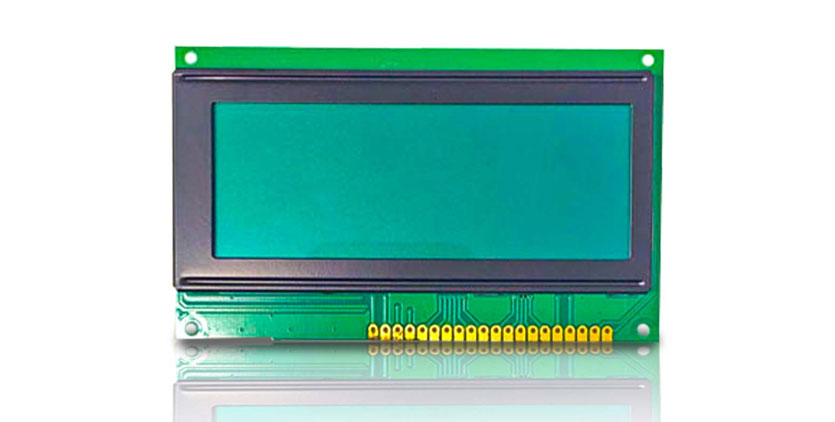Introduction to Graphic LCD Display Modules
Graphic LCD Display Module is a specialized electronic component designed to visually represent information or graphics. Unlike traditional alphanumeric LCDs that primarily display text, Graphic LCDs have the capability to render images, charts, and intricate graphical elements. They consist of a liquid crystal display (LCD) panel, a driver circuit, and often an integrated backlight.
Importance and Applications of Graphic LCDs
Graphic LCDs play a pivotal role in various industries due to their versatile display capabilities. Here are some key reasons for their importance:
- Advanced Visual Representation: Graphic LCDs allow for the presentation of complex images, icons, and graphics, making them invaluable in applications where visual data representation is crucial.
- Enhanced User Experience: They offer a superior user interface, enabling more intuitive interactions in devices and equipment. This is particularly significant in consumer electronics and industrial machinery.
- Flexibility and Customization: Graphic LCDs can be tailored to specific requirements, allowing for the creation of unique user interfaces and display designs.
- Compatibility with Microcontrollers: They can be easily integrated with microcontrollers, allowing for seamless communication between the controller and the display module.
- Wide Range of Applications:
- Medical Devices: Used in patient monitors, diagnostic equipment, and medical imaging devices to display critical data and images.
- Industrial Control Systems: Employed in control panels for machinery, providing operators with real-time data and visual feedback.
- Automotive Displays: Found in instrument clusters, infotainment systems, and heads-up displays, enhancing the driving experience.
- Consumer Electronics: Utilized in products like gaming consoles, digital cameras, and MP3 players for rich graphic interfaces.
- Test and Measurement Instruments: Used to display various parameters, waveforms, and measurement results in scientific instruments.
- Energy Efficiency: Many modern Graphic LCDs are designed with energy-efficient technologies, making them suitable for battery-powered devices.
Graphic LCD Display Modules are indispensable components in modern electronic devices, offering advanced visual representation and enhancing user experiences across a wide range of industries and applications. Their versatility and flexibility make them a critical choice for designers and engineers seeking high-quality displays for their products.
Troubleshooting Common Graphic LCD Issues
Dealing with Pixel Errors and Dead Pixels:
- Identifying Pixel Errors:
- Pixel errors manifest as stuck pixels (constantly on), dead pixels (constantly off), or hot pixels (abnormally bright).
- Use diagnostic tools or specialized software to detect and locate these issues.
- Pixel Fixing Techniques:
- Pressure Method: Gently massage the affected area with a soft, microfiber cloth. Apply slight pressure to try and reactivate the stuck pixel.
- Pixel Exercisers: Use software that rapidly cycles through colors to help unstick pixels.
- Avoiding Physical Pressure:
- Ensure the LCD screen is not subjected to excessive pressure or impact, which can lead to pixel issues.
- Utilizing Manufacturer’s Warranty:
- If pixel errors persist and are covered by the manufacturer’s warranty, consider contacting them for a replacement or repair.
Addressing Backlight and Contrast Problems:
- Adjusting Brightness and Contrast Settings:
- Access the display settings menu and adjust the brightness and contrast levels to achieve optimal visibility.
- Checking Backlight Settings:
- Ensure the backlight settings are appropriately configured. Some displays offer adjustable backlight intensity.
- Inspecting Backlight Components:
- Examine the backlight unit for any signs of damage, such as flickering or uneven illumination. Replace it if necessary.
- Cleaning the Display Surface:
- Dust or smudges on the surface can affect backlighting. Gently clean the screen with a microfiber cloth and appropriate cleaner.
- Updating Display Drivers:
- Outdated or incompatible drivers can lead to contrast and backlight issues. Update drivers to the latest version.
- Checking for External Interference:
- Nearby light sources, particularly intense ones, can interfere with the display’s visibility. Adjust the display’s position or lighting conditions accordingly.
- Verifying Power Supply Integrity:
- Ensure the power supply is stable and provides the necessary voltage to the display. Fluctuations can affect backlight performance.
- Consulting Technical Support:
- If problems persist, consult the manufacturer’s technical support or refer to the user manual for specific troubleshooting steps.
By following these steps, you can effectively troubleshoot and resolve common graphic LCD issues related to pixel errors, dead pixels, backlighting, and contrast problems. Remember to handle the LCD screen delicately to avoid further damage during troubleshooting.
Elevate Your Display Experience with Royal Display’s Custom Introduction to Graphic LCD Display Modules
When it comes to custom Graphic Display Modules, Royal Display stands as a distinguished manufacturer with a rich history of serving display modules across diverse markets. Our extensive experience in market and product development underscores the commitment to delivering tailored solutions that meet the unique needs of our clients. With Royal Display, you’re not just investing in a product; you’re partnering with a trusted industry leader dedicated to innovation, quality, and customer satisfaction. Elevate your display experience with Royal Display’s exceptional range of Graphic Display Modules. Contact Us Today!






